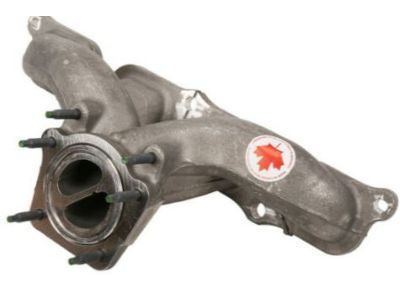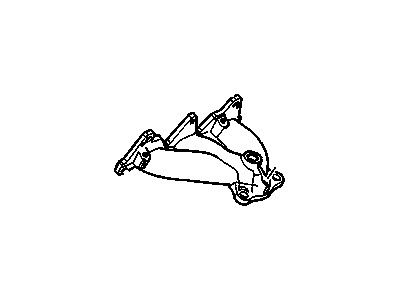
My Garage
My Account
Cart
Genuine Chevrolet Traverse Exhaust Manifold
Engine Exhaust Manifold- Select Vehicle by Model
- Select Vehicle by VIN
Select Vehicle by Model
orMake
Model
Year
Select Vehicle by VIN
For the most accurate results, select vehicle by your VIN (Vehicle Identification Number).
3 Exhaust Manifolds found
Chevrolet Traverse Exhaust Manifold Assembly
Part Number: 12670220$309.40 MSRP: $529.04You Save: $219.64 (42%)Ships in 1-2 Business DaysChevrolet Traverse Engine Exhaust Manifold (Machining)
Part Number: 12588987$131.05 MSRP: $216.89You Save: $85.84 (40%)Ships in 1-3 Business DaysChevrolet Traverse Engine Exhaust Manifold
Part Number: 12571100$85.13 MSRP: $140.01You Save: $54.88 (40%)Ships in 1-2 Business Days
Chevrolet Traverse Exhaust Manifold
He stated that Chevrolet Traverse vehicles' Exhaust Manifold has the significant function of channeling hot exhaust gases to prevent intake reversion for better engine performance. The manifold is situated on the top of the exhaust system and has intertwining tubes fit into the engine block. Exhaust manifolds differ in their design and material and their main function is to transport the exhaust gases through the catalytic converter and muffler so that dangerous compounds are not in the passengers' reach. Headers are those versions of manifold that helps in improving the flow efficiency by decreasing the flow resistance and revving up the velocity of the exhaust gases. Additional features such as ceramic coating of the engine bay as well as the wrapping of the exhaust can to some extent be used to contain heat whereas other systems such as Yamaha's EXUP provides a system where back pressure can be normalized in the most efficient manner.
Each OEM Chevrolet Traverse Exhaust Manifold we offer is competitively priced and comes with the assurance of the manufacturer's warranty for the part. Furthermore, we guarantee the speedy delivery of your orders right to your doorstep. Our hassle-free return policy is also in place for your peace of mind.
Chevrolet Traverse Exhaust Manifold Parts Questions & Experts Answers
- Q: How to remove and reinstall exhaust manifolds in 3.6L V6 engine on Chevrolet Traverse?A:Disconnect the cable from the negative battery terminal. Raise the vehicle and support it securely on jackstands. Apply penetrating oil to the studs and nuts that attach the catalytic converters to the exhaust manifolds as they're usually rusty. Remove the catalytic converter bolts and disconnect them from the exhaust manifolds. If you're working on a left (front) manifold, remove the oil dipstick tube. Disconnect the oxygen sensor electrical connectors, then unclip the wiring harness. Remove the exhaust manifold heat shield fasteners and shield. Remove the exhaust manifold mounting bolts. The lower bolts for the right (rear) manifold can be removed from under the vehicle. Lift off the exhaust manifolds and discard the gaskets. Check the manifold for cracks and make sure the bolt threads are clean and undamaged. The manifold and Cylinder Head mating surfaces must be clean before the manifolds are reinstalled-use a gasket scraper to remove all carbon deposits and gasket material. The cylinder heads are made of aluminum, therefore aggressive scraping is not suggested and will damage the sealing surfaces. Also, if any of the manifold bolts are broken, it indicates a warped manifold. Have the manifold machined at a cylinder head reconditioning shop prior to installing the manifold to the vehicle. If this is not done, the manifold may not seal properly and the new manifold bolts will probably break. Place the manifold on the cylinder head and install the mounting bolts finger light. When tightening the manifold bolts, work from the center to the ends and be sure to use a torque wrench. Tighten the bolts to the torque. If required, bend the exposed end of the exhaust manifold gasket back against the cylinder head. Apply an anti-seize compound to the threads of the outer heat shield bolts, then install the bolts and tighten them to the torque. The remainder of installation is the reverse of removal. Start the engine and check for exhaust leaks.















